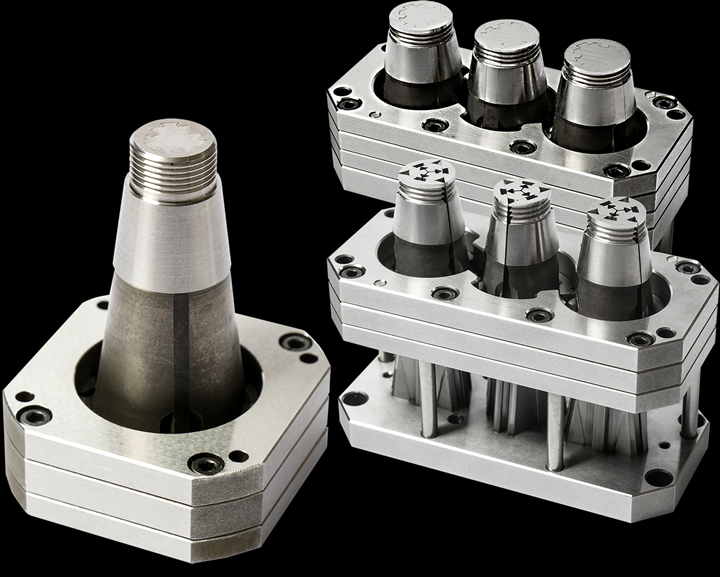Collapsible Cores Optimize Molding Threads and Undercuts
DME’s S-Core Collapsible Cores enable parts production from six to 400 mm and three different segment designs.

S-Core Collapsible Cores. Photo Credit: DME
DME introduces its advanced solution to molding threads and undercuts with its new S-Core Collapsible Cores. The S-Core is a dynamic design that can be produced in six, eight or 12 segments, enabling parts to be produced as small as 6 mm and as large as 400 mm. The length and depth of the part feature dictates the number of segments required to release the undercut.
Six segments has three large and three small slide segments each. According to DME, this option provides sufficient collapse for undercuts up to 600 mm.
Four large and four small slide segments each are available for the eight segments design. This option is used for intermediate (medium) undercuts and can be designed in oval and square shapes to compensate for part deformation/shrink.
The 12 segments offering is the smallest possible collapsible core available. This design is optimized for producing undercuts on diameters as small as 6 mm.
Each DME S-Core utilizes patented safety stops preventing the folding segments from touching each other during ejection or over travel. This results in a longer-lasting collapsible core that produces higher-quality parts.
The DME S-Core Dovetail Cores, for example, enable simplified smaller molds, faster cycle times, improved part quality and reduced mold maintenance over traditional devices, making it an ideal choice for threading or undercut applications, DME says.
With the S-Core Rack System Cores, more parts are able to be produced in a smaller space, owing to the ability to place them closer together via a common retaining ring. This is an important feature when space in the mold is limited, DME notes, as it allows designers to create smaller molds to run on smaller presses. Rack systems can be made with up to eight cores and a minimum spacing of 30 mm, however, this is dependent on the size of the product being produced and the required undercut depth. This offering is also available with conformal cooling to reduce cycle time.
Related Content
-
Treatment and Disposal of Used Metalworking Fluids
With greater emphasis on fluid longevity and fluid recycling, it is important to remember that water-based metalworking fluids are “consumable” and have a finite life.
-
How to Eliminate Chatter
Here are techniques commonly used to combat chatter and guidelines to establish a foundation for optimizing the moldmaking process.
-
Advantages and Disadvantages of Copper and Graphite Electrodes
Both copper and graphite provide approximately the same end result, so it is important for a shop to consider the advantages and disadvantages of each material in order to discover what would work best in their shop floor environment.














